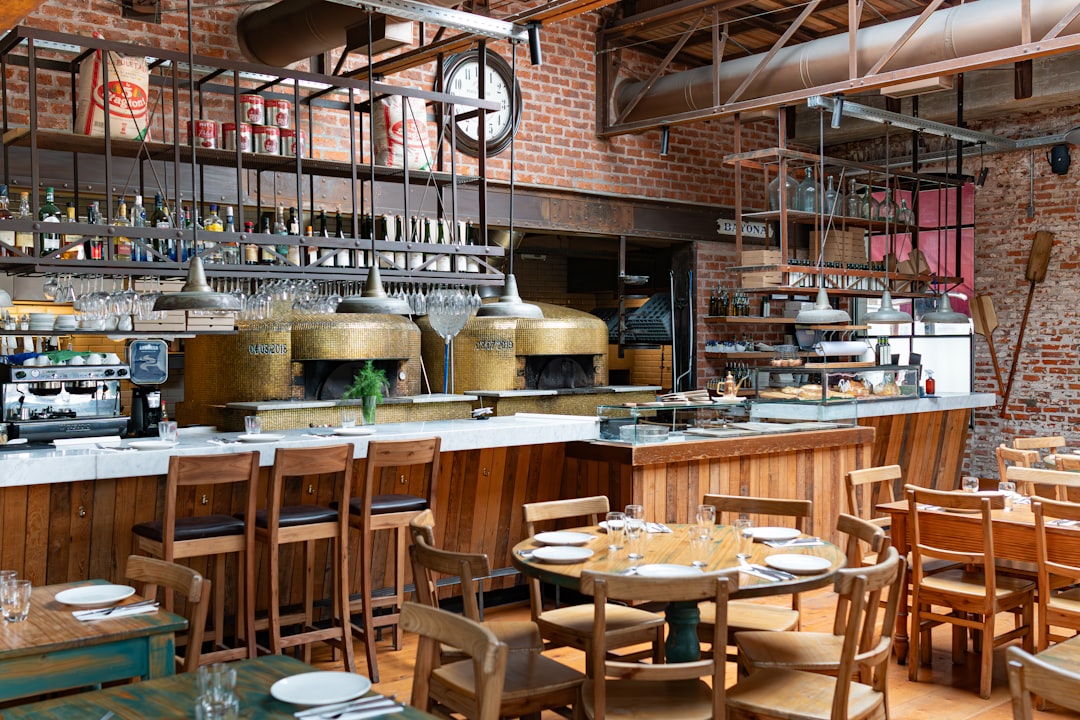In the competitive restaurant industry, data is the secret sauce that can transform your business from surviving to thriving. While your instincts and experience are valuable, combining them with concrete analytics creates a recipe for sustainable success. Let's explore how smart data usage can revolutionize your restaurant operations.

Data-driven decision making involves systematically collecting and analyzing information about your restaurant's operations, customer behaviors, and market trends to make strategic business decisions. It replaces gut feelings with factual insights.
For restaurants, this means leveraging sales data, customer behavior analytics, and operational metrics to inform choices about menu design, staffing, promotions, and inventory management. This approach aligns your operations with actual customer preferences and market trends, optimizing both profitability and efficiency.
Think of it as having a constant pulse on your business – like a chef who doesn't just taste a sauce once but monitors it throughout cooking, making micro-adjustments based on what they observe.
The restaurant landscape has dramatically shifted. Digital ordering has exploded, consumer preferences change rapidly, and competition is fiercer than ever.
Traditional POS systems weren't designed for this new reality. As noted in research from Harvard Business Review, restaurants that embrace data-driven strategies consistently outperform their competitors in both revenue growth and customer retention.
The world has moved to delivery and digital ordering. Your decision-making process needs to catch up. Spindl was created specifically to address this gap, providing restaurant owners with a unified platform that captures data across all operational touchpoints.
Consider what happened during the pandemic: restaurants that could quickly analyze changing order patterns and pivot accordingly survived, while those relying solely on pre-pandemic practices struggled to adapt.
Start by determining which metrics matter most to your specific restaurant:
Focus on metrics directly tied to your business goals rather than vanity metrics that look impressive but don't drive action. For example, tracking total customers is less valuable than tracking repeat customers and their average spend.
Data fragmentation is one of the biggest challenges restaurants face. Your valuable information is scattered across:
An integrated restaurant management platform like Spindl centralizes these data streams, giving you a unified view of your operations and eliminating the need to manually compile reports from multiple sources. This integration is like having all your kitchen stations communicating seamlessly rather than operating as isolated islands.
With centralized data, you can identify meaningful patterns:
According to research from Zyda Analytics, these insights allow for real-time adjustments to market conditions, turning data into immediate competitive advantages. For instance, you might discover that rainy Tuesdays drive a 40% increase in delivery orders for comfort foods – information you can leverage for targeted promotions.
Use your data to inform strategic experiments:
The beauty of data-driven experimentation is that it reduces risk. Rather than completely overhauling your menu based on a hunch, you can test small changes and measure their impact precisely.
The data-driven approach is cyclical. After implementing changes:
This continuous improvement cycle ensures your restaurant evolves with changing customer preferences and market conditions, rather than reacting to them after the fact.

Data analysis reveals which items are your stars (high profit, high popularity), puzzles (high profit, low popularity), plow horses (low profit, high popularity), or dogs (low profit, low popularity).
With this information, you can:
For example, a casual dining restaurant might discover that their $14 mushroom risotto costs nearly as much to produce as their $22 seafood risotto due to seasonal ingredient pricing, prompting a menu adjustment that preserves margins while maintaining customer satisfaction.
Labor typically accounts for 30-35% of restaurant costs. Data-driven scheduling helps:
According to Lucent Innovation, restaurants using analytics for staffing optimization have reduced labor costs by up to 15% without compromising service quality. Imagine the impact of redirecting that 15% toward marketing, menu development, or improved employee benefits.
Data analytics transforms inventory from guesswork to precision:
A steakhouse that typically orders 100 pounds of ribeye weekly might discover through analytics that they consistently throw away 15 pounds. By adjusting orders and creating strategic specials to utilize inventory before it spoils, they can recapture thousands in annual profit.
The modern diner expects personalization. Data helps deliver it:
For instance, KwickPOS analytics can reveal that a subset of your customers who order appetizers and cocktails rarely purchase dessert. This insight could prompt a limited-time appetizer and dessert pairing promotion targeted specifically at this segment.
Many restaurant operators lack data analysis experience. Solutions include:
Remember, you don't need to become a data scientist overnight. Start with analyzing one area of your business, master it, then expand.
Poor data leads to poor decisions. Ensure quality by:
If your servers inconsistently record special requests or substitutions, your inventory and popularity metrics will be skewed. Creating clear protocols and simplifying data entry reduces these errors.
Staff may resist new data-driven approaches. Overcome this by:
When employees see how data can make their jobs easier (like better predicting staffing needs so they're neither overwhelmed nor sent home early), resistance typically transforms into advocacy.
Restaurants that embrace data-driven decision making gain significant advantages:
As Tripleseat notes, the restaurants that thrive are those that can anticipate changes rather than simply react to them – exactly what data-driven decision making enables.
The journey to data-driven decision making starts with a single step: centralizing your restaurant data. Modern restaurant management platforms like Spindl integrate order taking, delivery management, self-service, point-of-sale, and loyalty systems into a single device, eliminating data silos and providing comprehensive analytics.
By bringing all your operations into one streamlined platform, you gain the insights needed to make confident, informed decisions that drive restaurant success in today's competitive landscape.
The restaurants that thrive tomorrow will be the ones that harness their data today. The question isn't whether you can afford to become data-driven—it's whether you can afford not to.
